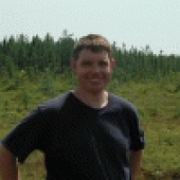Document Type
Article
Publication Title
Tectonics
Rights and Access Note
This Item is protected by copyright and/or related rights. You are free to use this Item in any way that is permitted by the copyright and related rights legislation that applies to your use. In addition, no permission is required from the rights-holder(s) for educational uses. For other uses, you need to obtain permission from the rights-holder(s).
Publication Date
7-22-2010
Publication Number
TC4008
Volume Number
29
Abstract/ Summary
Three-dimensional numerical models are used to investigate the mechanical evolution of the southern Alaskan plate corner where the Yakutat and the Pacific plates converge on the North American plate. The evolving model plate boundary consists of Convergent, Lateral, and Subduction subboundaries with flow separation of incoming material into upward or downward trajectories forming dual, nonlinear advective thermal/mechanical anomalies that fix the position of major subaerial mountain belts. The model convergent subboundary evolves into two teleconnected orogens: Inlet and Outlet orogens form at locations that correspond with the St. Elias and the Central Alaska Range, respectively, linked to the East by the Lateral boundary. Basins form parallel to the orogens in response to the downward component of velocity associated with subduction. Strain along the Lateral subboundary varies as a function of orogen rheology and magnitude and distribution of erosion. Strain-dependent shear resistance of the plate boundary associated with the shallow subduction zone controls the position of the Inlet orogen. The linkages among these plate boundaries display maximum shear strain rates in the horizontal and vertical planes where the Lateral subboundary joins the Inlet and Outlet orogens. The location of the strain maxima shifts with time as the separation of the Inlet and Outlet orogens increases. The spatiotemporal predictions of the model are consistent with observed exhumation histories deduced from thermochronology, as well as stratigraphic studies of synorogenic deposits. In addition, the complex structural evolution of the St Elias region is broadly consistent with the predicted strain field evolution. Citation: Koons, P. O., B. P. Hooks, T. Pavlis, P. Upton, and A. D. Barker (2010), Three-dimensional mechanics of Yakutat convergence in the southern Alaskan plate corner, Tectonics, 29, TC4008, doi: 10.1029/2009TC002463.
Repository Citation
Koons, Peter O.; Hooks, B. P.; Pavlis, T.; Upton, P.; and Barker, A. D., "Three-Dimensional Mechanics of Yakutat Convergence in the Southern Alaskan Plate Corner" (2010). Earth Science Faculty Scholarship. 113.
https://digitalcommons.library.umaine.edu/ers_facpub/113
Citation/Publisher Attribution
Koons, PO, Hooks, BP, Pavlis, T, Upton, P, and Barker, AD, 2010, Three-Dimensional Mechanics of Yakutat Convergence in the Southern Alaskan Plate Corner: Tectonics, v. 29, TC4008. To view the published open abstract, go to http://dx.doi.org and enter the DOI.
Publisher Statement
© Copyright 2010 American Geophysical Union
DOI
10.1029/2009TC002463
Version
publisher's version of the published document








